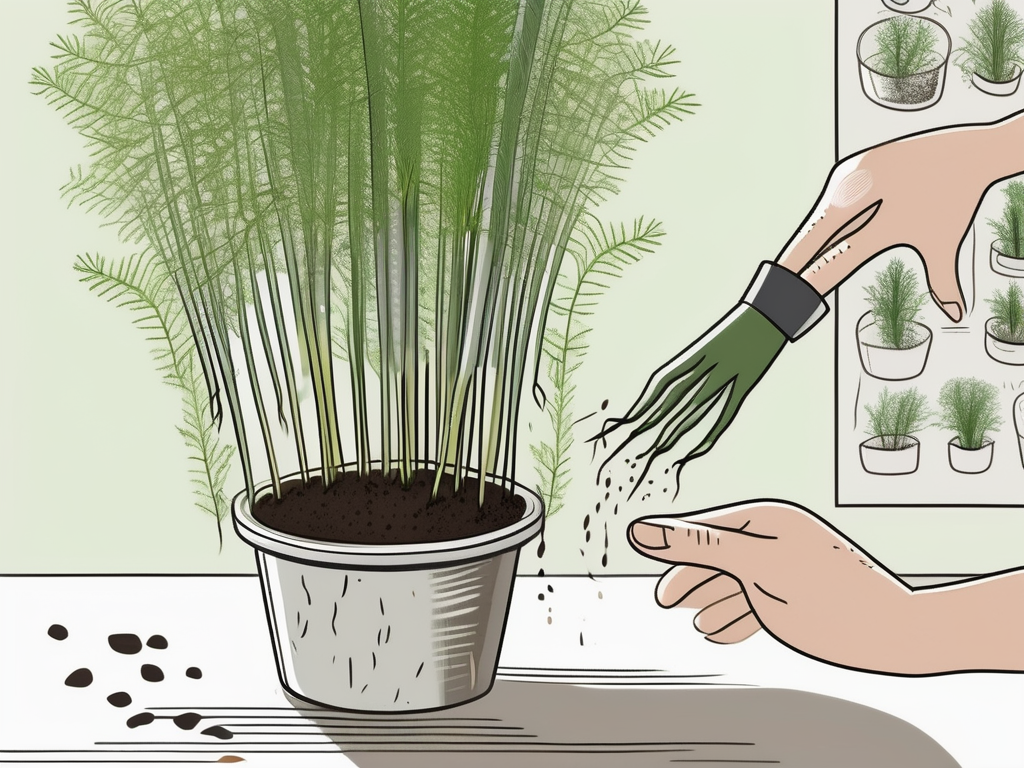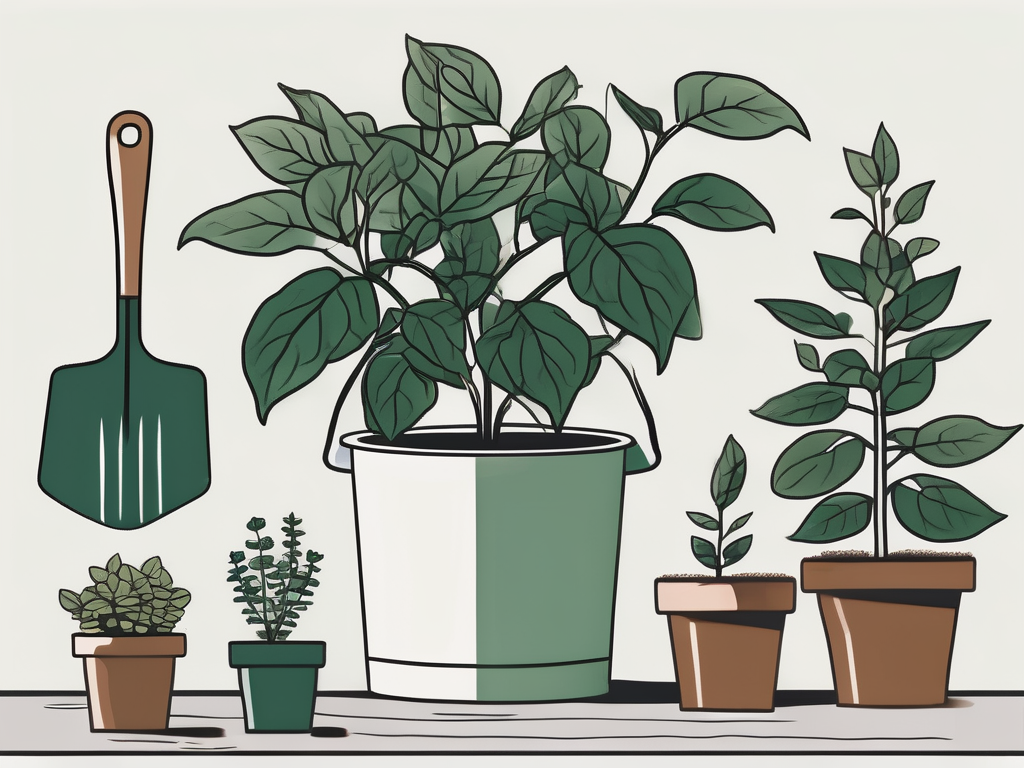
Asparagus ferns are a delightful addition to any home, offering a touch of greenery with their feathery foliage. But every plant parent knows that at some point, your leafy companion will outgrow its pot. This is where repotting comes into play. While repotting might seem a bit tricky at first, it’s an essential skill to master for a healthy and thriving plant.
In this article, we’ll chat about everything you need to know to successfully repot your asparagus fern. We’ll cover signs that it’s time to repot, choosing the right pot and soil, the repotting process itself, and aftercare tips to ensure your plant settles in nicely. So, roll up your sleeves and let’s get started!
Recognizing When to Repot Your Asparagus Fern
It’s not always obvious when your asparagus fern needs a new home, but there are a few telltale signs that it might be time for a change. Recognizing these signs early can prevent stress on your plant and keep it in great shape.
Firstly, observe the roots. If they’re peeking out of the pot’s drainage holes, it’s a clear sign that they need more space. You might also find that the plant is drying out faster than usual, needing more frequent watering. This happens because the roots are taking up most of the space, leaving little room for soil and thus, less moisture retention.
Another hint is when the plant isn’t growing as vigorously as it used to, despite your usual care routine. It’s like a goldfish in a small bowl—it simply needs a bigger space to grow. Also, if your fern starts shedding leaves or looks a bit droopy, it might be crying out for a bigger pot.
Finally, if it’s been more than a year since you last repotted or if you’ve just brought your plant home from the nursery, it might be time to consider repotting to refresh the soil and give those roots some room to stretch.
Choosing the Right Pot
Now that you’ve decided it’s time to repot, the next step is picking the right pot. This decision is more important than you might think, as it affects the health and growth of your asparagus fern.
First things first, size matters! Choose a pot that’s one or two sizes larger than the current one. This gives the roots enough room to grow without overwhelming them with too much space, which can lead to waterlogging and root rot.
Material is another consideration. While terracotta pots are popular for their breathability, they dry out faster. This might require more frequent watering, which is something to keep in mind if you’re a bit forgetful. On the other hand, plastic pots retain moisture longer, which can be a blessing or a curse depending on your watering habits.
Don’t forget drainage holes. They are non-negotiable when it comes to pots. Good drainage prevents water from sitting at the bottom and causing root rot. If you fall in love with a pot that lacks these, you might want to reconsider or drill some holes yourself.
Lastly, consider aesthetics. Since your plant will be a part of your home decor, choose something that complements your style. Whether it’s a sleek modern pot or a rustic ceramic one, make sure it’s something you’ll enjoy looking at every day.
Picking the Perfect Soil
Soil is the foundation of your plant’s health, and choosing the right mix is crucial for a successful repotting. Asparagus ferns prefer a soil that’s well-draining and rich in organic matter.
A good potting mix for asparagus ferns can be a combination of regular potting soil, peat moss, and perlite or sand. This blend ensures that the soil retains enough moisture without becoming soggy, which can lead to root rot. The peat moss helps with moisture retention, while the perlite or sand improves drainage.
Some plant lovers prefer to add a bit of compost for extra nutrients. This can be particularly beneficial if you want to give your plant a little nutritional boost. However, be cautious with the amount, as too much organic matter can hold excess moisture.
When preparing your soil, think of it like baking a cake. You want to make sure all the ingredients are well mixed and there are no clumps. This ensures that when you water your plant, the moisture is evenly distributed and reaches all parts of the root system.
Preparing Your Plant for Repotting
Before you jump into repotting, a little prep work goes a long way. Start by watering your asparagus fern a day before you plan to repot. This makes it easier to remove the plant from its pot and minimizes stress on the roots.
Next, gather your tools. You’ll need gloves, a trowel, and a pair of scissors or pruners. If you don’t already have these, don’t worry—most of these items can be found at your local garden center or even a home improvement store.
Prepare your new pot by filling it with a bit of your soil mix. You want enough soil at the bottom so that when you place your fern in, the top of the root ball is about an inch below the rim of the pot. This allows space for watering without overflow.
It’s also a good practice to inspect your plant for any signs of pests or disease. If you notice any pests, like mealybugs or spider mites, it’s best to treat them before moving your plant to a new pot. Similarly, trim off any dead or diseased roots, as these can affect the overall health of your asparagus fern.
The Repotting Process
Alright, it’s time to get your hands dirty—literally! Start by gently removing the plant from its current pot. You might need to tap the sides or carefully run a knife around the edge to loosen the soil.
Once out, take a moment to inspect the roots. Healthy roots are white and firm. If you spot any mushy or brown roots, give them a trim with sterilized scissors. This pruning not only removes unhealthy roots but encourages new growth.
Place your asparagus fern in the center of the new pot. Begin filling in with your soil mix, gently packing it down as you go. You want to ensure there are no large air pockets, but don’t pack it too tightly. The roots need some wiggle room to grow.
As you fill, keep the plant at the same depth it was in its original pot. This is important because planting it too deep can cause the stem to rot, while planting it too shallow may dry out the roots.
Once filled, give the pot a gentle tap on the sides to settle the soil. Water the plant thoroughly until water drains from the bottom, ensuring the soil is moist and the roots have made good contact with their new home.
Caring for Your Repotted Fern
After repotting, your asparagus fern will need a little TLC to help it adjust to its new environment. Here are some tips to keep it happy and healthy.
Firstly, place your plant in a spot with bright, indirect light. Direct sunlight can be too harsh, especially after repotting, while too little light can stunt its growth. A north or east-facing window is often ideal.
Watering is crucial. You want to keep the soil consistently moist but not soggy. Overwatering can lead to root rot, a common issue with ferns. A good rule of thumb is to water when the top inch of soil feels dry to the touch.
Humidity is a friend to your asparagus fern. If your home is on the dry side, consider misting the plant regularly or placing a tray of water nearby to increase humidity. Alternatively, a humidifier can be a great investment for both your plants and your own comfort.
Lastly, avoid fertilizing immediately after repotting. Give your plant some time, about a month or so, to settle before introducing any fertilizer. When you do start feeding it again, use a balanced liquid fertilizer at half strength to support its growth without overwhelming it.
Troubleshooting Common Repotting Issues
Even with the best intentions, sometimes things don’t go as planned. If your asparagus fern seems unhappy after repotting, don’t worry—there are ways to troubleshoot common issues.
If you notice wilting or yellowing leaves, it might be a sign of transplant shock. This is fairly common and usually temporary. Ensure your plant has the right amount of light and moisture, and it should bounce back in a few weeks.
Another issue could be droopy stems. This might indicate overwatering or poor drainage. Check if the pot has adequate drainage holes and that the soil isn’t waterlogged. Adjust your watering routine if needed.
In some cases, you might see a lack of growth. Patience is key here. After repotting, plants often focus on root development before showing new growth above the soil. Give it some time and continue with your care routine.
Lastly, if pests become a problem, treat them promptly with insecticidal soap or neem oil. Keeping your plant clean and checking for pests regularly can prevent infestations from taking hold.
Incorporating Asparagus Ferns into Your Home Decor
Beyond their green charm, asparagus ferns can be a great addition to your interior design. Their delicate foliage adds texture and a pop of color to any space.
Consider placing your fern in a hanging basket to showcase its trailing growth. This not only highlights the plant but also adds dimension to your room, drawing the eye upwards. Hanging plants are perfect for small spaces where floor space is limited.
If you prefer a more traditional setup, opt for a decorative plant stand. This elevates the fern and can make it a centerpiece in your living room or office. Pairing plants with different heights creates visual interest and depth.
For a cohesive look, choose pots that complement your existing decor. Neutral colors like white, gray, and terracotta are versatile and suit most styles. Alternatively, if you love a bit of color, go for pots in bold hues that contrast with the green foliage.
Don’t forget about groupings. Asparagus ferns look wonderful when grouped with other plants, like snake plants or pothos, creating a mini indoor jungle. This not only looks great but also helps maintain a microclimate of humidity beneficial to all your plants.
Repotting as a Bonding Experience
Repotting doesn’t have to be a solo activity. Involve your family or friends, and turn it into a fun bonding experience. It’s a great way to share the joy of plant care and maybe even impart a little green thumb wisdom.
Set up a repotting station in your backyard or balcony. Make it a social event with snacks and drinks. You’ll be surprised at how a simple activity like repotting can be both educational and entertaining.
If you have kids, involve them too. It’s a wonderful opportunity to teach them about nature and responsibility. They’ll love getting their hands dirty, and it’s an experience they’re likely to remember and cherish.
For plant-loving friends, consider hosting a plant swap alongside repotting. Everyone can bring a plant or cutting to exchange, and you’ll all leave with something new. Plus, it’s a fantastic way to diversify your plant collection without spending a dime.
Final Thoughts
Repotting your asparagus fern can seem daunting at first, but with the right tools and a bit of knowledge, it becomes a rewarding experience. From recognizing when it’s time to repot, choosing the best pot and soil, to ensuring your plant thrives in its new home, each step is a chance to connect more deeply with your plant.
Here at Cafe Planta, we’re passionate about helping you grow your plant family. Whether you’re looking for a new plant friend or need advice on caring for your leafy companions, we’re here for you. If you have questions, feel free to email us or send us a message on Instagram. Let’s continue to nurture our love for plants together!












